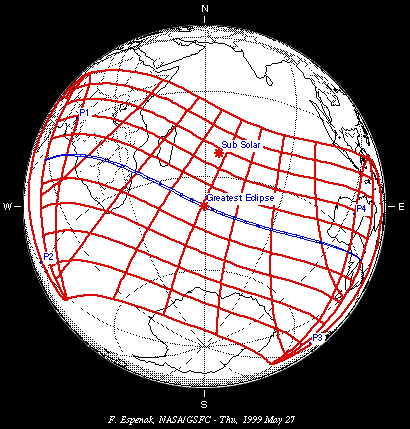
|

|
A total
solar eclipse—when the moon passes in front of the sun and
blocks it completely—is an amazing sight. To see a total
solar eclipse, you have to be in just the right spot on the earth.
When you look up in the sky at the sun and the moon, you notice
a strange coincidence—both look the same size in the sky. Both
the sun and the moon look about one-half degree in diameter. Now,
they're not really the same size. The sun's diameter is actually
400 times the moon's diameter. But, you must also take into account
that the sun is also 400 times farther away from the earth, reducing
its apparent size to the same as the moon's. Because of this relationship,
when you are standing on the earth, looking up at the two, you
must be in a very limited zone to see the moon cover the entire
face of the sun. If you were to move a little north, the sun would
peek out over the top of the moon; a little south, and the sun
shines past the southern limb of the moon. The match is so good
that the
"path of totality" is never more than 167 miles in diameter,
and is usually less. This means that very few people have seen
a total eclipse because the shadow only covers a very small area
on the earth.
|




